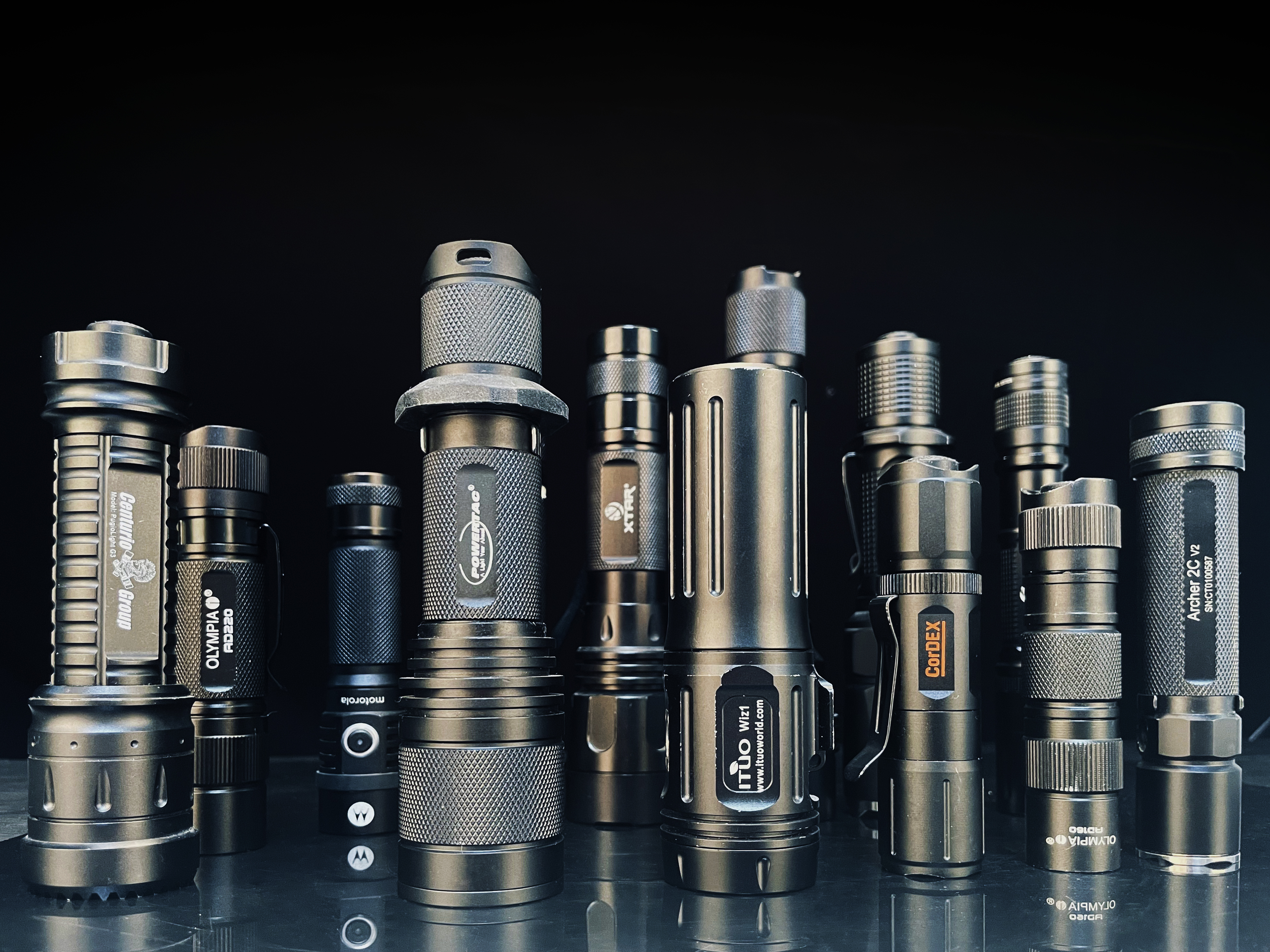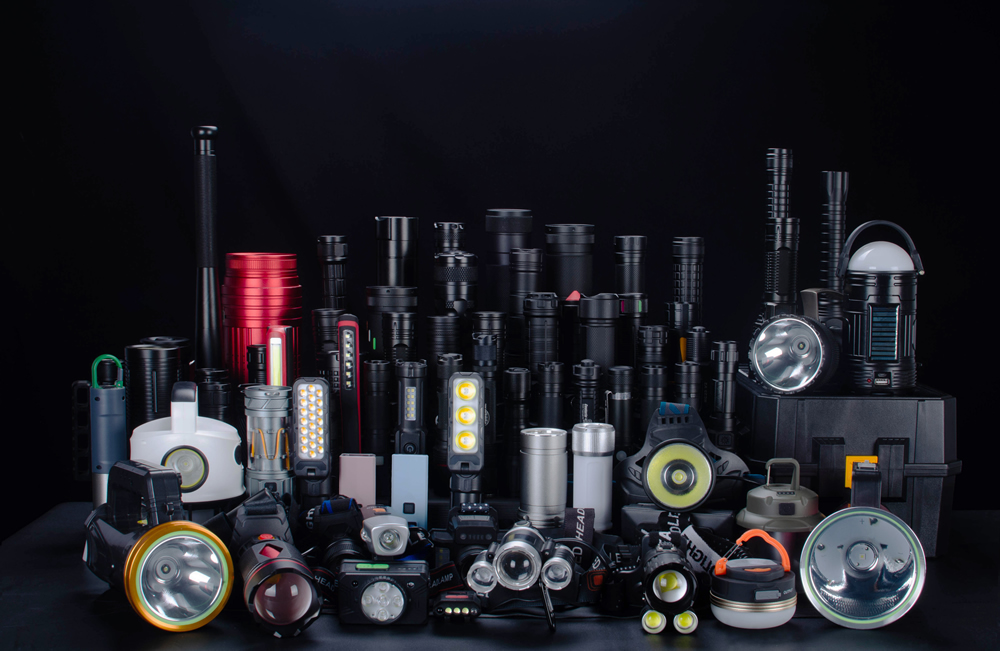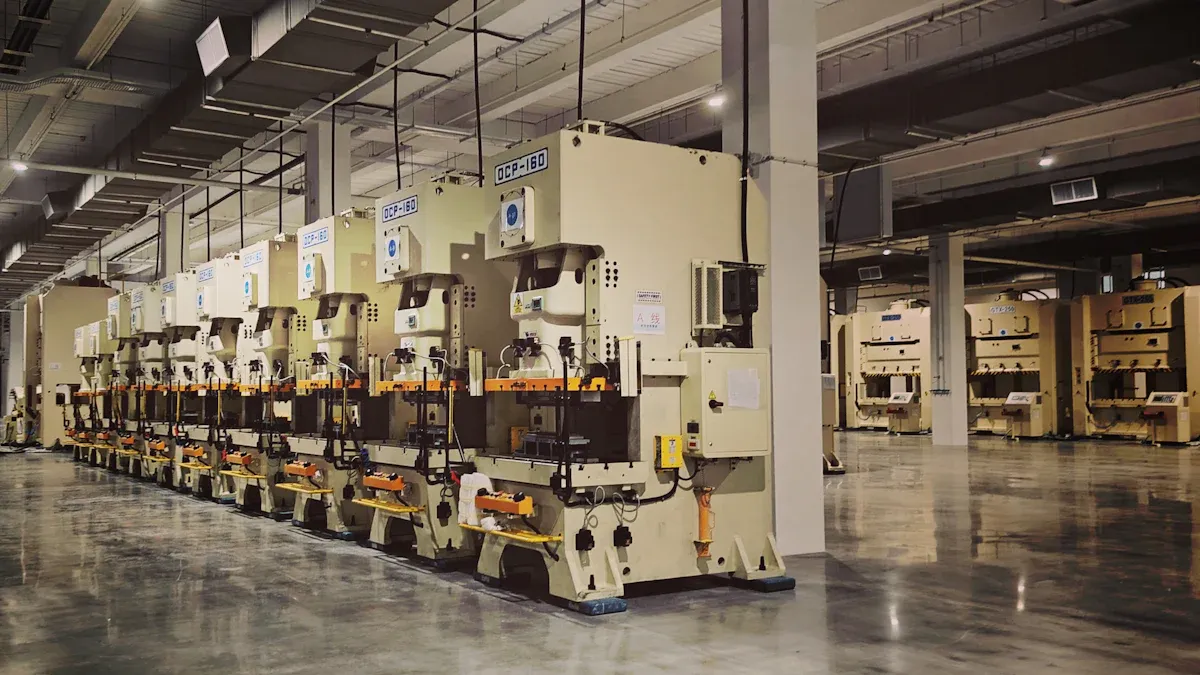Selecting the Right Flashlight Supplier for Your Industry-Specific Needs

Finding the right supplier for flashlights can shape your business’s safety and efficiency. You need products that match your unique work environment and meet all industry regulations. Selecting the wrong partner exposes you to several risks:
Risk Type | Description |
|---|---|
Misunderstanding regulations | Suppliers may fail to meet necessary certifications, leading to fines and legal penalties. |
Failure to meet certification | Missing certifications can block products from entering markets, affecting usability in professional applications. |
Misaligned expectations | Poor communication can result in products that do not meet performance standards, leading to customer dissatisfaction. |
Lack of clear instructions | Unclear specifications can lead to incorrect product features, increasing costs for replacements or repairs. |
Misaligned expectations can lead to product failures.
Lack of clear instructions can result in incorrect labeling and poor packaging.
Providing detailed specifications is crucial to avoid costly errors.
A practical flashlight buying guide helps you navigate these challenges and ensures you get reliable flashlights through flashlight wholesale channels that truly support your operations.
Key Takeaways
Choose suppliers with industry experience to ensure they understand your specific needs and can deliver reliable products.
Always verify that flashlights meet necessary safety certifications to avoid legal issues and ensure worker safety.
Assess product features like brightness, run time, and beam distance to match flashlights to your operational requirements.
Look for customization options that allow you to tailor flashlights to your business needs, enhancing functionality and branding.
Maintain clear communication with suppliers and regularly review performance metrics to build strong, long-term partnerships.
Flashlight Buying Guide: Key Selection Criteria

Supplier Capabilities and Experience
When you evaluate a supplier, you should look beyond just product catalogs. A supplier with years of experience in your industry understands trends and can anticipate your needs. Their capabilities—such as facility size, staff expertise, and robust quality control systems—directly impact the quality of the flashlights you receive. Suppliers with refined processes and strong quality management consistently deliver reliable products.
Tip: Choose suppliers who can demonstrate a track record of on-time delivery and efficient stock management. This reduces the risk of supply chain disruptions.
Here is a quick reference table to help you compare suppliers:
Criteria | Description |
|---|---|
Experience | Industry knowledge and understanding of customer needs |
Logistical Capabilities | Ability to deliver on time and manage inventory efficiently |
Flexibility | Willingness to adapt to changing order sizes or seasonal demands |
Certifications | Proof of compliance with safety and quality standards |
Customer Feedback | Insights from reviews about reliability and product quality |
Quality and Features | Assessment of materials, durability, brightness, and battery life |
Cost-Effectiveness | Transparent pricing and potential for discounts |
Negotiation Strategies | Ability to secure favorable terms and conditions |
A supplier’s ability to meet unique industry requirements also matters. For example, some industries need explosion-proof flashlights or models with high ingress protection ratings. Others may require corrosion resistance or wide temperature range operation. Always ask about these capabilities before making a decision.
Product Features: Brightness, Run Time, Beam Distance
You need to match important features to your specific application. The American National Standards Institute (ANSI) sets benchmarks for brightness, run time, and beam distance. These standards allow you to compare flashlights across brands using consistent measurements.
Brightness: Measured in lumens or candela, brightness determines how well you can see in dark or hazardous environments.
Run Time: Indicates how long the flashlight operates before needing a recharge or battery replacement.
Beam Distance: Shows how far the light reaches, which is crucial for search and rescue or inspection tasks.
Many businesses request LED technology for energy efficiency and longer lifespan. Rechargeable options appeal to companies focused on sustainability. Smart features, such as app control or GPS tracking, are becoming more popular in professional settings.
Note: Always check if the flashlight meets the minimum requirements for your industry. For example, hazardous environments may require explosion-proof models, while outdoor work may demand high impact resistance and waterproofing.
Customization and Flexibility
Customization can set your business apart and ensure your flashlights meet every operational need. Many suppliers offer adjustable brightness levels, different power sources, and built-in SOS features. Some industries request multipurpose tools integrated into the flashlight, such as seatbelt cutters or glass breakers.
Customization Request | Description |
|---|---|
Adjustable Brightness Levels | Ranges from low for reading to high for search and rescue |
Different Power Sources | Includes rechargeable, solar, disposable, or hand-cranked options |
Built-in SOS Features | Emergency signaling with dedicated buttons |
Multipurpose Tool Integration | Combines flashlight with tools like cutters or breakers |
Personalized Engravings | Custom branding or identification |
Suppliers who offer OEM/ODM services, private labeling, or engraving help you tailor products to your brand or operational requirements. Flexibility in order sizes and delivery schedules also supports your business as it grows or faces seasonal changes.
Pro Tip: Ask your supplier about their ability to adapt to new requests or changes in demand. This flexibility can save you time and money in the long run.
By focusing on these key selection criteria, you ensure that your supplier delivers flashlights with the important features your industry demands. This approach helps you avoid costly mistakes and supports your business’s long-term success.
Identifying Industry Needs for Flashlight Wholesale
Application-Specific Requirements
You must understand your business needs before you select a flashlight wholesale supplier. Each industry faces unique challenges. For example, mining and oil and gas operations require intrinsically safe flashlights to prevent accidents in hazardous location environments. A tragic incident in a West Virginia coal mine showed how non-intrinsically safe equipment, including flashlights, can lead to disaster:
"A case study from a coal mine in West Virginia underscores the importance of intrinsically safe flashlights. In 2010, an explosion occurred due to the ignition of methane gas, resulting in the death of 29 miners. The subsequent investigation revealed that non-intrinsically safe equipment, including flashlights, contributed to the disaster."
You should always match your flashlight wholesale purchase to the safety standards of your application. In hazardous location settings, spark prevention and emergency reliability become critical. High-power LEDs help with machine inspections and power outages. When you define your business needs, you reduce risk and improve safety.
Flashlight Types: Floodlight vs. Spotlight
Choosing the right light for your business needs means understanding the difference between floodlights and spotlights. The table below highlights key differences:
Feature | Floodlights | Spotlights |
|---|---|---|
Purpose | General illumination for large areas | Focused illumination for specific features |
Industry Usage | Outdoor work, sports, security | Stages, landscaping, artistic applications |
Beam Type | Wide-angle beam for broader coverage | Narrow beam for precise control |
Light Quality | Evenly diffused light for short distances | High intensity light for long ranges |
Ideal Situations | Security, sports fields, parking lots | Highlighting artwork, creating ambiance |
Floodlights work best for outdoor lighting tasks, such as illuminating construction sites or parking lots.
Spotlights help you accentuate specific features or focus on distant objects.
Many businesses use both types to meet all their business needs.
When choosing the right light, assess the visibility required for each task. Consider the breadth and depth of illumination, as well as the light pattern. Evaluate specifications like material, size, color output, and number of diodes.
Battery and Beam Type Considerations
Battery choice and beam technology play a major role in meeting your business needs. The table below compares common battery types:
Battery Type | Pros | Cons |
|---|---|---|
Alkaline | Long shelf life, easy to find, quick replacement | Prone to leaking, lower lumen output, not eco-friendly |
NiMH | Rechargeable, steady power, replaces alkaline | High self-discharge, limited lifetime |
Lithium | High output, high capacity, rechargeable, eco-friendly | Limited lifetime |
Rechargeable batteries work best if you use flashlights often. Non-rechargeable batteries suit infrequent use.
Lithium batteries perform well in extreme temperatures and resist leaking, making them ideal for hazardous location environments.
Not all flashlights accept lithium batteries, so check compatibility before you buy.
Beam type also affects performance. Flood beams illuminate large areas at short distances, while spot beams focus on small areas at long range. Some flashlights let you adjust between flood and spot beams, giving you flexibility for different business needs.
When you evaluate flashlight wholesale options, always consider how long of a run time you need for your application. Runtime, battery performance, and beam adjustability all impact your operational efficiency. By focusing on these factors, you ensure your supplier delivers flashlights that truly fit your business needs.
Evaluating Wholesale Bulk Flashlights Suppliers
Quality and Durability Standards
You need to set high standards when you evaluate wholesale bulk flashlights. Quality should always come first. Start by checking for certifications like ISO, CE, and RoHS. These marks show that the supplier meets strict safety and environmental rules. The table below highlights important certifications:
Certification | Importance |
|---|---|
CE Marking | Ensures compliance with EU safety, health, and environmental directives. |
UL Listing | Confirms independent safety testing by Underwriters Laboratories. |
RoHS Compliance | Restricts hazardous materials for user and environmental safety. |
Test product samples for performance and durability. Assess power output, beam distance, and battery runtime. Always prioritize quality over cost to ensure long-term value. Functional testing and safety checks, such as overheating protection, help you avoid future problems with flashlights.
Supplier Reliability and Reputation
A reliable supplier helps you avoid costly disruptions. You can check online reviews and ratings to see how other businesses rate wholesale bulk flashlights providers. Attend trade shows to meet suppliers face-to-face and ask about their quality control. Companies like Maytown, which hold ISO9001:2015 and amfori BSCI verification, show a strong commitment to quality and durability. Choose suppliers who focus on material selection and build quality. Transparent return and warranty policies also signal a trustworthy partner. For example, Jetbeam and Lucetta offer five-year warranties on most products, covering manufacturing defects and normal use.
Cost-Saving Opportunities and Volume Discounts
Wholesale bulk flashlights offer many ways to save on cost. The table below outlines common cost-saving opportunities:
Cost-Saving Opportunity | Description |
|---|---|
Lower per-unit costs | Buying in bulk reduces the cost per flashlight. |
Better negotiation power | Large orders give you leverage for better deals. |
Long-term value | Durable, energy-efficient flashlights lower replacement costs. |
Bulk discounts | Suppliers often provide bulk discounts or free shipping. |
Shipping savings | Larger orders can reduce shipping cost. |
Avoiding hidden fees | Request a full cost breakdown to spot extra charges. |
Build strong relationships with your supplier to secure better pricing. Research the supplier’s history and market prices before you negotiate. Set a clear budget and use your buying power to get the best deal on wholesale bulk flashlights. Always consider the total cost, including warranty and after-sales support, to maximize your investment.
Safety-Rated Flashlights and Compliance
Meeting Industry Safety Standards
You must prioritize safety when choosing safety-rated flashlights for your workplace. Each industry follows strict safety rules and testing to protect workers and equipment. You need to understand which standards apply to your environment. For example, hazardous locations require flashlights that prevent sparks and withstand tough conditions. Many industries, such as oil and gas or mining, rely on flashlights that meet specific safety standards.
The most common safety standards for professional flashlights include:
Region | Standard | Description |
|---|---|---|
North America | UL Standards | Governed by Underwriters Laboratories, covering Class I, II, and III, Division 1, Hazardous Locations. |
Europe | ATEX Directive | Governs safety standards for equipment in explosive atmospheres, marked with the ‘EX’ symbol. |
International | IECEx System | Provides global certification for equipment in explosive atmospheres, recognized in many countries. |
Always check if your safety-rated flashlights meet the standards for your region. This step helps you avoid fines and ensures worker protection.
Certifications and Regulatory Requirements
Certifications play a key role in confirming the quality and safety of your flashlights. You should focus on checking certifications before making any purchase. Many industries require flashlights to operate at low voltage and current to prevent ignition of flammable materials. Temperature regulation also matters, as it limits surface heat and reduces risk in hazardous environments.
The following table highlights important features and certifications for regulated environments:
Feature/Standard | Description |
|---|---|
Low Voltage and Current | Operates at low voltage and current to prevent sparking or heating that could ignite flammable materials. |
Temperature Regulation | Limits surface temperature to prevent ignition of hazardous atmospheres. |
Robust Design | Built to withstand harsh conditions, including drops, water, and dust. |
Certification | Must meet specific standards such as those provided by Underwriters Laboratories (UL) in the U.S. |
Industry Relevance | Critical in industries like oil and gas, mining, and chemical processing to prevent explosions. |
You should always verify certifications for every safety-rated flashlight you buy. Reliable suppliers provide documentation and testing reports. This process ensures you meet all safety requirements and maintain high quality in your operations. Many companies use safety-rated flashlights with multiple certifications to comply with local and international regulations. You protect your business and your team by following these steps.
Tip: Request certification documents from your supplier and review them carefully. This habit helps you stay compliant and avoid costly mistakes.
Managing Logistics and Inventory with Suppliers

Shipping and Lead Times
You need to plan your orders with a clear understanding of shipping and lead times. Reliable suppliers help you avoid delays and keep your operations running smoothly. Fast shipping supports urgent needs, while predictable lead times allow you to schedule projects with confidence. Leading flashlight suppliers offer different timelines based on the type of product you order.
Product Type | Lead Time | |
|---|---|---|
Standard Products | 1-2 business days | N/A |
Custom Items | N/A | 3-5 business days |
LED-integrated Fixtures | N/A | 10 days to 10 weeks |
You should always confirm these details before placing a bulk order. Ask your supplier for tracking options and updates. This step helps you maintain control over your inventory and meet your deadlines.
Tip: Build a buffer into your schedule for custom or complex orders. This practice protects your business from unexpected delays.
Inventory Management and Scalability
Managing inventory well ensures you never run out of essential flashlights. You need a system that tracks stock in real time and supports your growth. Many businesses use advanced inventory management tools to keep operations efficient and scalable. Finale Inventory, for example, offers real-time tracking, automated reordering, barcode scanning, and multichannel syncing. These features help you maintain high quality across all locations.
Inventory Management System | Key Features | Best For |
|---|---|---|
Finale Inventory | - Real-time stock tracking | High-growth eCommerce sellers and SMBs needing accurate multichannel control and forecasting |
Practical Considerations | - Scope & Fit | Businesses looking for tailored inventory solutions to manage scalability effectively |
You should choose a system that matches your business size and future plans. Focus on solutions that support quality control and provide clear data. This approach helps you scale up without losing track of your inventory or sacrificing quality.
Note: Regularly review your inventory process. This habit ensures you keep up with demand and maintain the quality your customers expect.
Building Long-Term Supplier Partnerships
Communication and Performance Metrics
You strengthen building long-term supplier relationships by setting clear expectations and tracking performance. You need to document key performance indicators (KPIs) in your contracts. This step reduces disputes and creates accountability. You should evaluate performance using scorecards or dashboards. Regular analysis of data helps you spot issues early and improve results. You must provide feedback to your supplier. This two-way communication process builds trust and encourages improvement. You keep track of the entire performance management process for transparency.
Step | Best Practice Description |
|---|---|
1 | Document KPIs in contracts to reduce disputes and create accountability. |
2 | Evaluate performance using scorecards or dashboards, and analyze data regularly. |
3 | Provide feedback to suppliers, fostering a two-way communication process. |
4 | Keep track of the entire performance management process for transparency and accountability. |
Tip: Schedule regular meetings with your supplier. Use these sessions to review performance data and discuss new goals.
Staying Updated on Flashlight Trends
You must stay informed about the latest flashlight market trends to keep your business competitive. Industry leaders monitor advancements in technology and changing consumer needs. You can follow these best practices:
Advancements in LED technology make flashlights brighter and more efficient.
Sustainable power solutions, such as rechargeable lithium-ion batteries, offer longer run times and faster charging.
Smart features and connectivity, including Bluetooth and app controls, enhance flashlight functionality.
Market dynamics and consumer trends drive specific demands for new products.
Customization and user experience allow you to tailor flashlights to your preferences.
You should attend trade shows, subscribe to industry publications, and connect with suppliers who share updates. Staying current helps you choose products that deliver high performance and meet your customers’ expectations.
You can streamline your flashlight choice by following these essential steps:
Check the supplier’s reputation through reviews or recommendations.
Contact suppliers for quotes and compare services.
Inquire about product quality to ensure a good build.
Ask about warranty and return policies.
Confirm shipping and delivery details.
Using this buying guide as your checklist helps you secure long-term benefits:
Reduced returns and improved satisfaction
Consistent performance and fewer replacements
Maximum value from bulk investments
Choose suppliers who prioritize quality, safety, and value for lasting success.
FAQ
How do you choose the best supplier for bulk flashlights?
You should evaluate each supplier based on experience, product quality, and delivery reliability. Request samples of flashlights and compare led performance. Review bulk pricing and ask about after-sales support. Reliable suppliers help you avoid delays and maintain high standards.
What are the main benefits of buying bulk led flashlights?
Bulk purchasing reduces costs per flashlight and simplifies inventory management. You gain access to volume discounts and consistent product quality. Led flashlights offer longer run times and lower maintenance. Suppliers often provide better warranty terms for bulk orders.
Can you customize bulk flashlights for your business?
Many suppliers offer customization options for bulk flashlights. You can request specific led brightness, branding, or special features. Custom orders allow you to match flashlights to your operational needs. Ask your supplier about minimum order quantities and lead times.
What should you check before ordering bulk led flashlights?
You need to confirm certifications, warranty coverage, and supplier reputation. Test led flashlights for durability and battery life. Review bulk pricing and shipping details. Reliable suppliers provide clear documentation and support for every bulk order.
How do you manage inventory when ordering bulk flashlights?
You should use inventory management software to track bulk shipments and stock levels. Suppliers may offer automated reordering for flashlights. Real-time tracking helps you avoid shortages. Choose suppliers who support scalable solutions for led flashlights.
See Also
Selecting the Perfect Headlamp Flashlight for Your Needs
A Complete Guide to Selecting Your Ideal Home Flashlight
Finding the Best High Power Flashlight for You
A Detailed Guide to Selecting Colorful Flashlights for Outdoors
